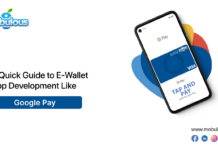What Is Blockchain-Based Infrastructure?
Blockchain-based infrastructure is the system behind how blockchain works, which includes servers, code, and protocols that help store and verify data securely. Information is recorded in blocks, and each block links to the previous one. This creates a chain of data that makes the network safe, decentralized, and reliable.
This setup is not just for cryptocurrency but for industries like healthcare, finance, and logistics. It removes the need for a central authority. The system allows open, secure, and real-time data sharing. Without it, blockchain would be just an idea. With it, we get a full digital trust system.
Not sure how blockchain fits your business? Talk to a business consulting company to explore custom strategies for digital transformation.
Why Blockchain Infrastructure Matters in 2025?
In 2025, blockchain isn’t experimental anymore, but it’s a working solution. Blockchain-based infrastructure matters now because it solves real problems, improves security, speeds up transactions, and brings transparency to areas where trust is weak. Think global finance, healthcare records, or digital identity.
This tech reduces human error and fraud as it cuts out the middlemen. Systems become faster and cheaper to run. More importantly, it’s ready to scale. Blockchain is handling millions of transactions across global networks. Businesses can no longer afford to ignore it. It’s not hype anymore, but it’s infrastructure for the future.
Want to dive deeper? Check out our blog “Demystifying Blockchain in App Development: Opportunities and Challenges” to explore how blockchain is reshaping the app world.
Core Components of Blockchain Infrastructure
1. Distributed Ledger
A distributed ledger is a shared database. It is copied across many computers. Each participant has the same version of the data, preventing tampering. No single party controls it. If one node fails, others keep working, making it reliable. It also builds trust across a decentralized network of users.
2. Decentralization
Decentralization removes the need for a central authority. Everyone in the network helps validate data. No single user can control the system, reducing risks and power imbalances. It also makes the network harder to attack. Trust is built into the structure, making it more secure and fair.
3. Cryptography
Cryptography protects data by turning it into unreadable code. Only users with the right key can unlock it, keeping sensitive information safe. It blocks hackers from stealing or altering data. It also ensures transactions are private. Without cryptography, blockchain would not be trusted. It is the backbone of security.
4. Hashing
Hashing creates a unique code for each block. It turns data into a fixed string of numbers and letters. Each block also contains the code of the block before it. If someone changes one block, the whole chain breaks, alerting the system. Hashing helps ensure data remains unchanged and trusted.
5. Immutability
Immutability means that once data is added, it cannot be changed. It becomes permanent. This is useful for records like contracts and audits. Everyone can trust that the data is real, building accountability. It also stops people from altering history. Immutability is key to making blockchain data reliable.
Curious about which programming languages power blockchain development? Explore our Top 9 Best Programming Languages For Blockchain App Development to find out.
Applications of Blockchain-Based Infrastructure
1. Finance
Blockchain-based infrastructure is changing how financial systems are built. Transactions are processed faster. Records are stored on public ledgers. These ledgers cannot be changed, reducing fraud. It also lowers costs by removing middlemen. Users get more control over their money. Financial systems become more efficient, secure, and transparent.
2. Banking
Banks use blockchain technology, supported by blockchain-based infrastructure, to improve their services. Identity checks become faster and more secure. Loan approvals take less time. Payments clear almost instantly. Every action is recorded in real-time, making compliance easier. It also reduces errors. Blockchain helps banks become more efficient and trustworthy for their customers.
3. Supply Chain Management
Blockchain-based infrastructure improves supply chain tracking. Every product gets a digital history. You can see where it came from and where it’s going, reducing fraud and delays. Everyone in the chain sees the same data. It helps companies react faster, meaning better service, less waste, and more trust.
4. Healthcare
Blockchain-based infrastructure makes healthcare data more secure. Patient records are encrypted. Only authorized users can access them, giving patients control of their own data. It also prevents data leaks. Doctors get accurate information faster, leading to better care. Blockchain adds privacy and reliability to healthcare systems.
5. Smart Contracts
Smart contracts are programs that run on blockchain-based infrastructure. They activate when specific conditions are met. No one needs to approve them, removing delays and confusion. Once launched, they cannot be changed, making deals more secure. They are used in areas like business, rentals, and insurance.
Building a blockchain solution? A web app development company will help you launch secure, scalable applications tailored for real-world use.
Evolution of Blockchain Infrastructure
Blockchain began with Bitcoin in 2008. At first, it was just about sending money. Now, Blockchain-based infrastructure supports many things, including smart contracts and decentralized apps. New tech has made it faster and easier to use. Today, it can handle millions of transactions per day. It’s used in real businesses.
Privacy tools have improved. Layer 2 systems now boost transaction speeds. Many chains offer different strengths. Some focus on security. Others aim for flexibility or speed. Blockchain is also merging with AI and IoT. That makes it more useful in cities, factories, and global systems. It’s ready for mass adoption.
Governments are now testing it. Big companies are using it to track goods and data. The infrastructure has matured. It can now support global-scale services. Blockchain is no longer a concept. It is a working tool for building secure and efficient digital systems.
Challenges of Blockchain Infrastructure
1. Scalability issues
Blockchain-based infrastructure often struggles with slow processing times. When traffic increases, transactions get delayed. Networks like Bitcoin and Ethereum are especially vulnerable, making it hard to scale. Users want fast systems. But blockchains still lag behind traditional payment networks. Until speed improves, it limits broader adoption in high-demand industries.
2. Energy consumption concern
Proof-of-work systems use a lot of energy. Bitcoin mining is one of the main examples. It needs powerful machines running constantly, increasing electricity use. It also raises environmental concerns, putting pressure on the industry. While newer models like proof-of-stake help, many platforms still rely on energy-heavy infrastructure.
3. Interoperability limitations
Most blockchains can’t talk to each other. They operate in isolation, making data sharing difficult. It limits how decentralized apps work across platforms. Developers face real barriers. Without strong interoperability, blockchain-based infrastructure remains fragmented, slowing innovation and adoption. Cross-chain solutions are being developed, but they’re not widespread yet.
4. Regulatory ambiguity
Rules around blockchain are still unclear. Different countries take different approaches. Some support it, while others restrict it. Many fall somewhere in between, making businesses nervous. They don’t want legal trouble. Without global standards, blockchain-based infrastructure exists in a legal grey area, slowing down investment and growth.
5. Skills gap
There aren’t enough skilled developers in blockchain. The technology is complex. Few people truly understand it. Universities don’t teach it widely. Training options are still limited, creating a gap in talent. As demand rises, the shortage gets worse. Without more education and experience, blockchain-based infrastructure can’t grow efficiently.
Struggling to find skilled blockchain talent? Hire dedicated developers to bring your project to life with proven expertise.
Latest Trends of Blockchain-Based Infrastructure
1. Cross-chain communication
Blockchains are starting to connect. Projects like Polkadot and Cosmos make this possible. They let data move between chains, helping apps become more flexible. It also removes silos. Blockchain-based infrastructure is shifting toward integration, making the entire ecosystem more useful. Interoperability is no longer optional. It’s becoming essential.
2. Smart contract upgrades
Smart contracts are getting smarter. Developers now build more advanced functions. New tools improve security and reduce errors. Platforms like Ethereum keep evolving, making contracts easier to write and manage. These changes boost confidence. They also make blockchain-based infrastructure more reliable. Smarter contracts mean better applications for real users.
3. DeFi growth surge
Decentralized finance keeps gaining momentum. People use it to lend, borrow, and trade. All this happens without banks. The demand is growing fast, pushing blockchain-based infrastructure to improve. Systems need to be faster and safer. As DeFi expands, it drives major upgrades. The tech behind it becomes stronger.
4. Enterprise integration
Big companies are now using blockchain. They’re adding it to existing systems. It’s not just for startups anymore. Blockchain-based infrastructure is part of business operations. It connects with databases and apps, improving efficiency and trust. As adoption spreads, blockchain becomes a serious tool. Not just an experiment.
5. Privacy tech boost
Privacy is becoming a bigger focus. Tools like zero-knowledge proofs are gaining ground. They let users share only what’s needed, protecting personal data. It’s useful in healthcare, finance, and more. These tools make blockchain-based infrastructure safer. Better privacy means more trust, leading to wider adoption across industries.
Conclusion
Blockchain-based infrastructure is no longer a future concept but is now a working foundation. Challenges still exist, including scalability, regulation, and interoperability. But progress is happening fast. Cross-chain communication, smart contracts, and enterprise adoption are moving the technology forward.
Blockchain-based infrastructure is quietly transforming industries, improving security, transparency, and efficiency in sectors like finance and healthcare. As we move through 2025, more organizations are adopting it and will be better prepared to lead in a decentralized future. The time to build on this infrastructure is now.
FAQs – Blockchain-Based Infrastructure
Q1. What is blockchain infrastructure?
Blockchain infrastructure includes the systems that power blockchain networks. It covers hardware like servers and software like nodes. It also includes things like consensus protocols. These parts work together to process transactions and secure the network. Without this infrastructure, blockchain apps wouldn’t run or store data safely.
Q2. What are the layers of the blockchain-based infrastructure?
Blockchain-based infrastructure has five main layers. First is the hardware, which includes nodes and servers. The second is the data layer, where information is stored. Then comes the network layer, handling communication. The fourth is the consensus layer. Finally, there’s the application layer, which powers smart contracts and user tools.
Q3. What are the 4 types of blockchain?
There are four main types of blockchain.
- Public blockchains are open to all.
- Private ones are restricted.
- Consortium blockchains are shared by a group.
- Hybrid models mix features of both public and private types.
Each one fits different use cases. The choice depends on control, speed, and privacy needs.
Q4. Who is the biggest blockchain company?
Coinbase is the biggest blockchain company today. It’s a major cryptocurrency exchange. It also builds tools for developers. Its user base is huge. The company has the highest market cap among blockchain firms. While others like IBM are active, Coinbase leads in value, volume, and real-world usage.
Q5. Is blockchain-based infrastructure the future?
Yes, blockchain-based infrastructure is seen as the future by many industries. It creates trusted systems. It also reduces costs and boosts security. From banking to logistics, it’s gaining ground. As more companies adopt it, the infrastructure will grow. It’s not just a trend. It’s shaping the next phase of digital systems.
Q6. What is an example of blockchain infrastructure?
Ethereum is a strong example. It’s a base-layer blockchain. Developers use it to build apps and smart contracts. The system relies on nodes, mining hardware, and programming tools. These all work together. They keep the network secure and running, showing how blockchain infrastructure supports real applications.
































